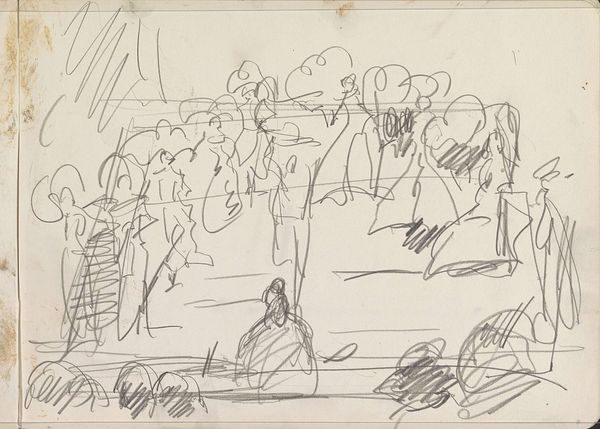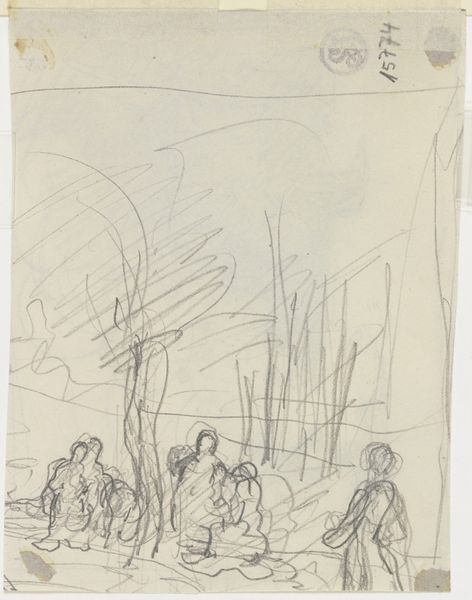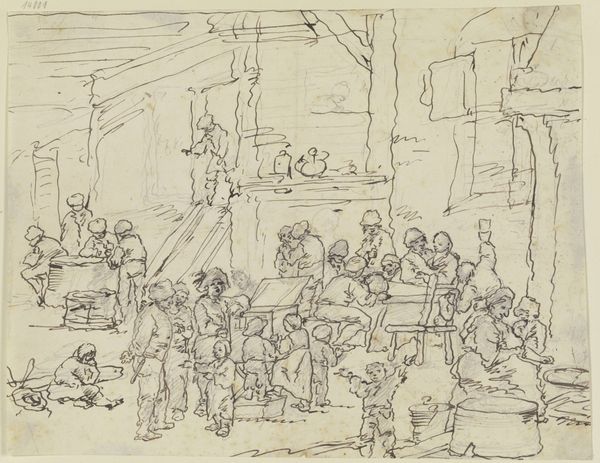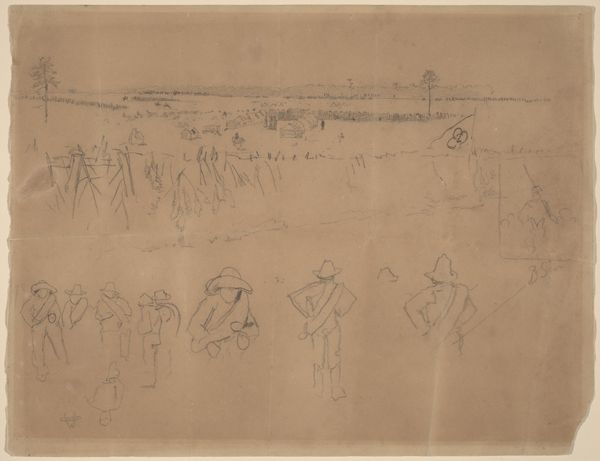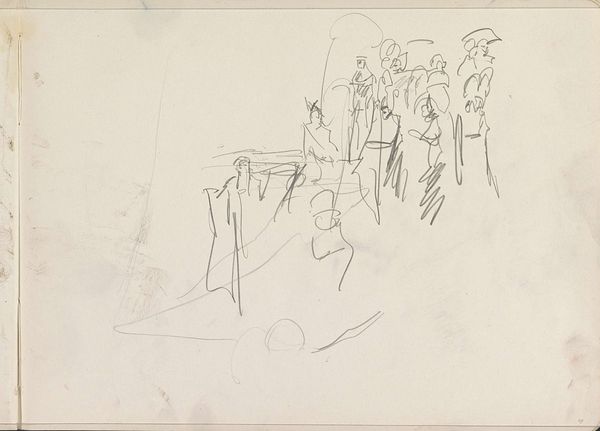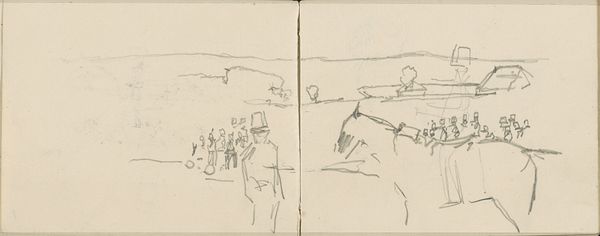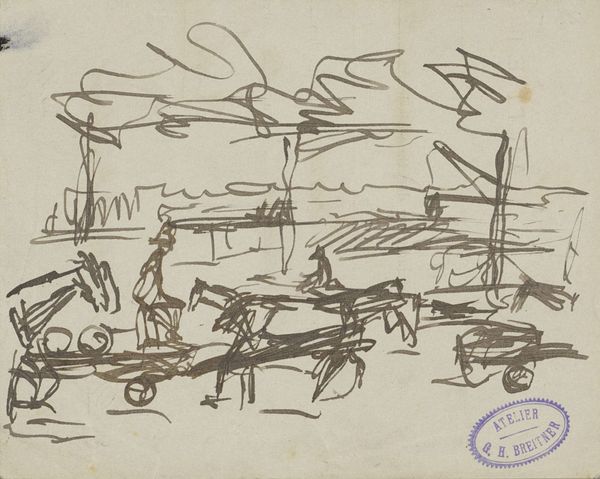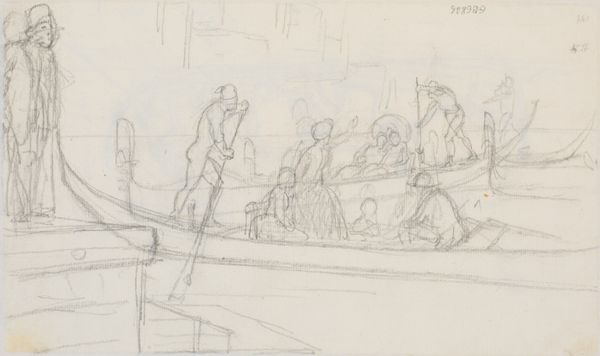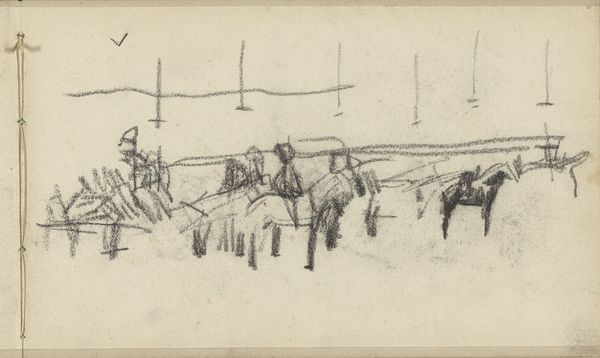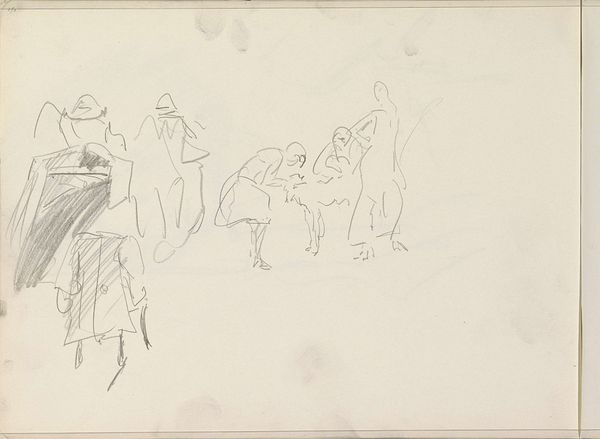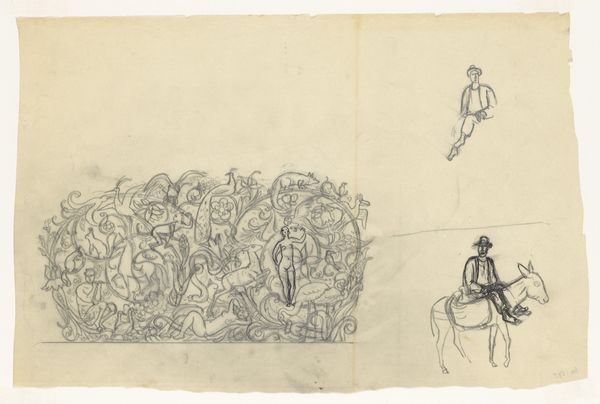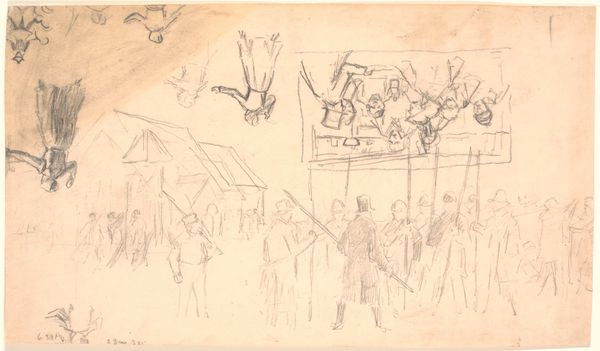
drawing, paper, pencil
#
17_20th-century
#
drawing
#
quirky sketch
#
landscape
#
german-expressionism
#
figuration
#
paper
#
personal sketchbook
#
german
#
idea generation sketch
#
sketchwork
#
ink drawing experimentation
#
sketch
#
pen-ink sketch
#
pencil
#
expressionism
#
sketchbook drawing
#
genre-painting
#
storyboard and sketchbook work
#
sketchbook art
#
initial sketch
Copyright: Public Domain
Curator: Okay, here we have Max Beckmann’s "Horse Racing," a pencil and ink drawing on paper, created around 1920. First impression? Editor: A controlled frenzy! The jockeys look almost skeletal, and there's a tension between the visible effort and speed and the sheer sketchiness of it all. It's as if he's trying to capture an emotion, not just a scene. Curator: Precisely! I see this work as almost autobiographical. The frenetic energy mirrors Beckmann's own tumultuous life after the First World War. He was deeply affected by his experiences. This drawing offers a brief window into his frame of mind as a war veteran grappling with the weight of human brutality. Editor: Yes, and the horse race, as a microcosm, also symbolizes something bigger than a recreational competition. In this work, the artist is also pointing to social mobility and privilege. It’s easy to romanticize these sorts of scenes but, as a commentary on post-war Europe, the class-based structures are pretty clear. Curator: Indeed. Beckmann loved these bustling scenes, like circuses or carnivals, but there's always an underlying darkness. The lack of detail makes it almost universal; it’s a horse race, but also, metaphorically, the human race. Editor: Which could explain why the horses look more energized than the humans! But think, too, about Expressionism, as a rejection of Naturalism. What are the social conventions that he is hoping to capture or shed in the figures rendered? He is clearly thinking through more than movement in a crowd here. Curator: Good point! And his initial idea might not be immediately apparent. As you can see, some marks are very dark, where he reworked areas as part of his expressive process. But he also left sections quite vague—almost erased. Editor: Which circles back to my first impressions, actually! A capture of feeling versus an outright story. This initial drawing, what is made visible in ink and graphite and what he is choosing to not illustrate— Curator: Exactly, a balancing act. It’s really remarkable, isn’t it? A deceptively simple sketch brimming with layers of meaning. Editor: Very much so. I think understanding these undercurrents helps us to see ourselves and our societies with a bit more nuance.
Comments
No comments
Be the first to comment and join the conversation on the ultimate creative platform.
